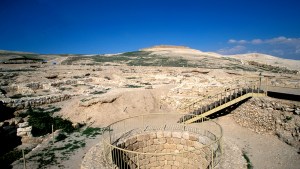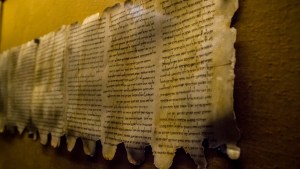The archaeological site of El-Araj has long been suspected to be the biblical town of Bethsaida, where the Apostles Simon Peter and Andrew were born and raised. In 2021, Aleteia reported on the findings of a team of excavators who were convinced that they had found the long lost “Church of the Apostles,” and now, new evidence has further supported the claim.
The team was led to El-Araj by several historical records from the 1st-entury Roman historian Flavius Josephus and the 8th-century Bishop Willibald, who documented his pilgrimage to the Holy Land. Josephus’ account noted a humble fishing village that existed until the 3rd century, while Willibald’s account refers to a Church erected on the site of the home of Sts. Peter and Andrew. Willibald’s records confirm that the church was still standing as of the 8th century; however, it is thought to have been razed by an earthquake a few decades later.
Now, a new discovery of an ancient floor mosaic suggests that the team at El-Araj are indeed at the correct site. ABC reports that the team of archaeologists from Kinneret College in Israel and Nyack College in New York unearthed another large floor mosaic, this time within the sacristy of the suspected “Church of the Apostles.”
The artwork, which can be seen in the video above, features a floral motif that is framed in a medallion shaped by rows of black tiles. The words the mosaic bears refer to a donor named “Constantine, the servant of Christ,” and an intercessory prayer to St. Peter, whom the artist referred to as “”chief and commander of the heavenly apostles.” The latter inscription is particularly telling, as the Byzantines often referred to St. Peter with this title.
In an interview with ABC, Steven Notley, academic director of the excavation, said of the find:
“This discovery is our strongest indicator that Peter had a special association with the basilica, and it was probably dedicated to him. Given that Byzantine Christian tradition routinely identified Peter’s home as Bethsaida, and not Capernaum, as is often thought today, it seems likely that the basilica commemorates his home.”
The team noted that one of the largest objectives of the excavation was to prove that there was a “layer of the 1st century,” on the site. With the discovery of the latest floor mosaic to be unearthed, they feel they have proven that there is indeed a history that dates back to the 1st century at El-Araj. While they note that the site has not been expressly identified as Bethsaida, they believe they have put together a strong case that it is the location of the biblical town.
Read more on the most recent findings at ABC.
Learn why the suspected site of the “Church of the Apostles” was discovered without a door, at Aleteia.


